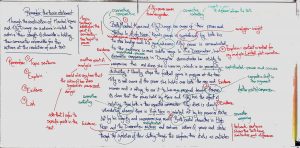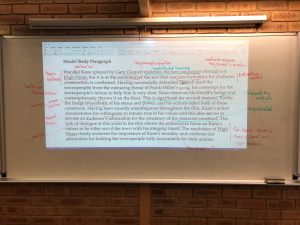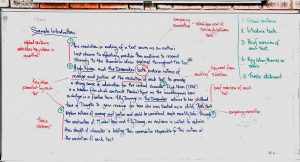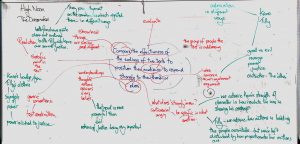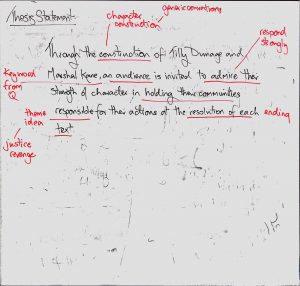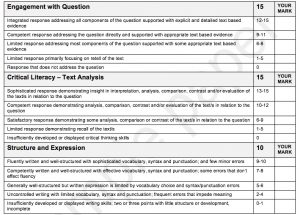Below is a screenshot of the modelled example from today’s lesson. Please note the annotations in both green and red.
There are a number of features to note in this modelled example:
- The structure of this paragraph is exactly the same as the previous modelled paragraphs I’ve given you.
- Please note the use of COMPARING and CONTRASTING connectives (you’ve been given a list of these in a previous lesson) to signpost both similarities and differences between the texts.
- There is a strong sense of textual analysis in this paragraph and there is reference to symbolism.
- The topic sentence is text-based/text-specific and establishes what the paragraph is going to be about- the symbolism and power of the clothes worn by the central characters.
- I refer to specific points in the text.
- There is only a VERY limited amount of plot narration. I’ve assumed that the person marking/assessing this response is familiar with each text.
- The paragraph is limited in terms of content, purely because of the space on my whiteboard. There’s more I could’ve said about each text in terms of how they might be compared.
- I’ve tried to model sophisticated language and to offer more precision in my argument.
- Titles of texts are underlined.
- The topic sentence builds explicitly on the thesis statement provided in the introduction and develops the argument promoted by the other two body paragraphs I gave you.
It is important that you use the modelled examples I’ve given you to consolidate your understanding of STRUCTURE. The ideas in your own body paragraphs should be your own. There is an expectation that your assessments next week will embrace the structures and frameworks I’ve given you but you’ll need to ensure you have practiced them before you sit your assessment next week.
